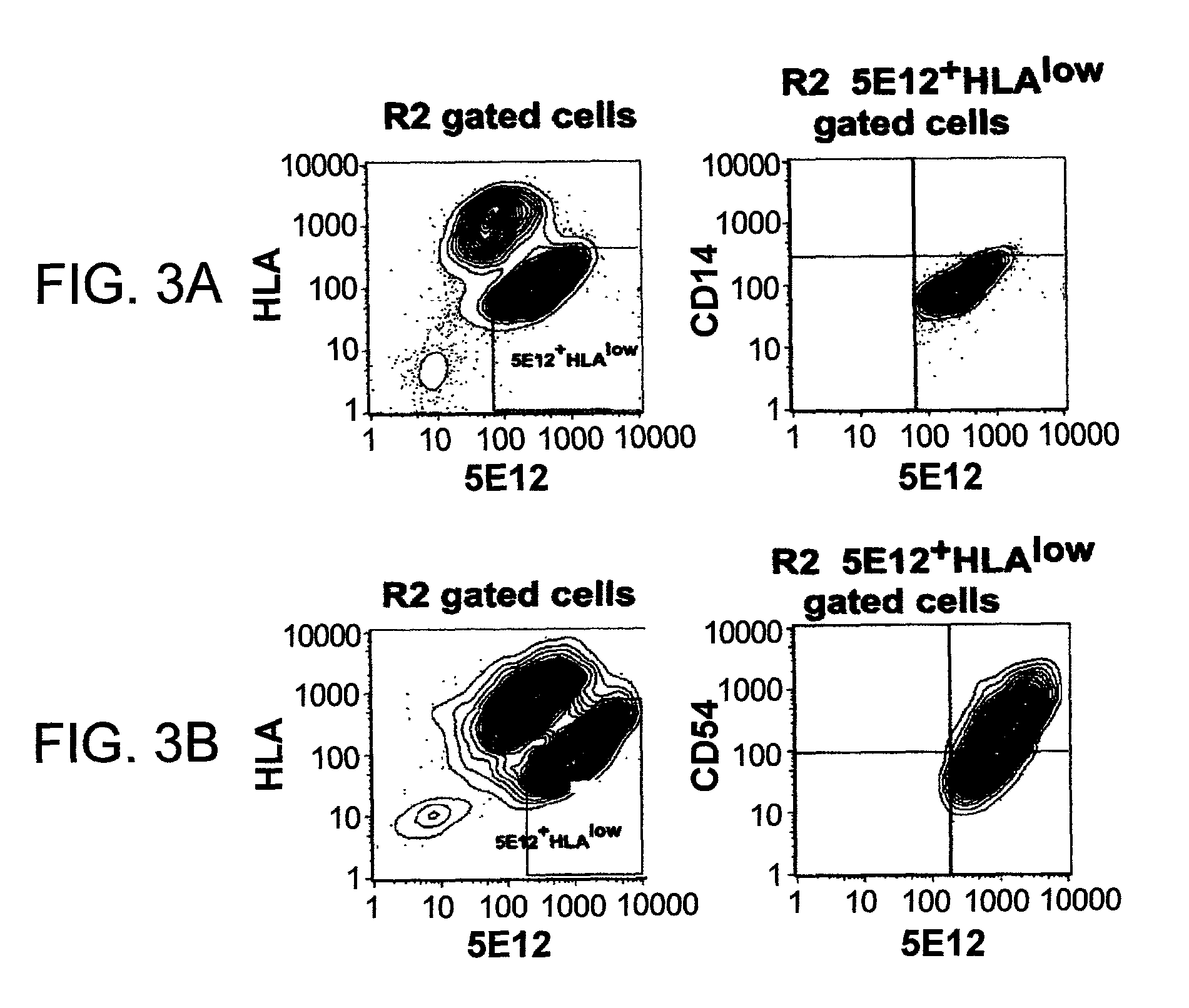Liver engrafting cells, assays, and uses thereof
a technology of liver engrafting and assays, applied in the field of liver engrafting cells, assays, can solve the problems of excessive damage reaching a “point of no return” and affecting the ability of liver regeneration, and achieve the effect of reducing the number of liver cells
- Summary
- Abstract
- Description
- Claims
- Application Information
AI Technical Summary
Benefits of technology
Problems solved by technology
Method used
Image
Examples
example 1
Flow Cytometric Sorting of Human Liver Cells
[0109]Dual laser flow cytometric analyses and sorting of human liver cells from fetal and adult tissue were performed on a Becton Dickinson FACSVantage SE. An Argon Ion laser and a Helium Neon laser were utilized as the primary and secondary excitation sources emitting 150 mW at the 488 nm wavelength and 30 mW of 633 nm wavelength, respectively. Light scattered at forward and orthogonal angles was amplified linearly and measured through 48 nm bandpass filters, employing a 0.6 OD neutral density filter in front of the forward scatter detector in order to attenuate high level forward angle scatter signals resulting from populations of larger sized cells. In this configuration there is sufficient dynamic range on the forward scatter axis to capture and scale forward angle scatter signals, resulting from the diverse range of cell sizes found in liver tissue, within a single linear decade. Typical forward scatter amplifier gain settings range f...
example 2
Isolation of a Liver Progenitor Cell
[0114]Liver cells previously frozen or freshly isolated liver cells were stained with 5E12. The cells were enriched for 5E12 by MACS column using a 5E12 Ab, then 5E12+cells were sorted. Alternatively, 5E12+cells were sorted directly after staining. For the sorting, cells are separated between R1 and R2 gates. R2 / 5E12+ cells represents the majority of liver engrafting cells in an in vitro or in vivo assay. The cells were characterized by expression of ck19 and albumin in the same cell (shown in FIG. 2A and 2B). In addition to 5E12, selection for lower levels of HLA-Class I expression enriched for liver engraftment, using antibody reactive with human HLA-Class I A,B,C (W6–32 antibody). When gating on the R2 cells, three distinct clustered subpopulations of cells can be resolved-by analysis of 5E12 fluorescence versus HLA-Class I fluorescence as two-dimensional density or contour plots (FIG. 1). One subpopulation displays negative staining for both 5...
example 3
Characterization of Liver Engrafting Cell Phenotype
[0120]Human fetal liver cells and human adult liver cells were obtained maintained at 4° C. To make a cell suspension the tissue was minced, resuspended in Ca++ free buffered saline, and digested with collagenase in the presence of hyaluronidase for 30 min at 37° C. Optionally the cell suspensions were additionally digested with trypsin / EDTA for 20 min at 37° C. The cell suspension was filtered through 70 μm nylon filter and resuspended in IMDM containing 2% FBS, 2 mM EDTA. To an aliquot of cells was added a combination of two or more antibodies, previously titrated, as shown in FIGS. 3 and 4. Isotype matched controls were utilized for all stainings. The cells were analyzed by flow cytometry as described in Examples 1 and 2.
[0121]The data show (FIG. 3A) that CD14 does not stain the LEC cells (R2, 5E12+ HLAlow). CD54, CD38 and CD34 positively stain the LEC (FIGS. 3B–3D). FIGS. 4A, 4D, 4G show the typical staining pattern for LEC. FIG...
PUM
| Property | Measurement | Unit |
|---|---|---|
| volume | aaaaa | aaaaa |
| diameter | aaaaa | aaaaa |
| temperature | aaaaa | aaaaa |
Abstract
Description
Claims
Application Information
 Login to View More
Login to View More - Generate Ideas
- Intellectual Property
- Life Sciences
- Materials
- Tech Scout
- Unparalleled Data Quality
- Higher Quality Content
- 60% Fewer Hallucinations
Browse by: Latest US Patents, China's latest patents, Technical Efficacy Thesaurus, Application Domain, Technology Topic, Popular Technical Reports.
© 2025 PatSnap. All rights reserved.Legal|Privacy policy|Modern Slavery Act Transparency Statement|Sitemap|About US| Contact US: help@patsnap.com



